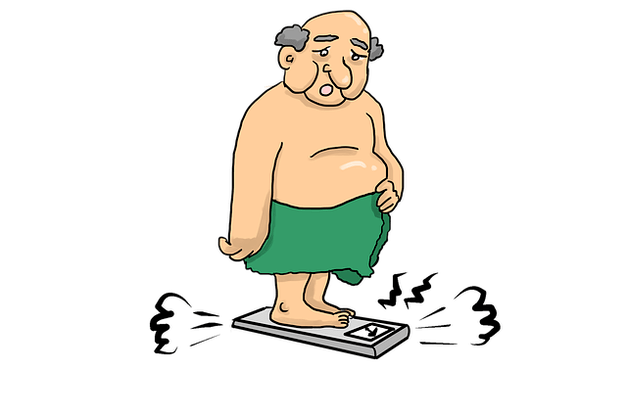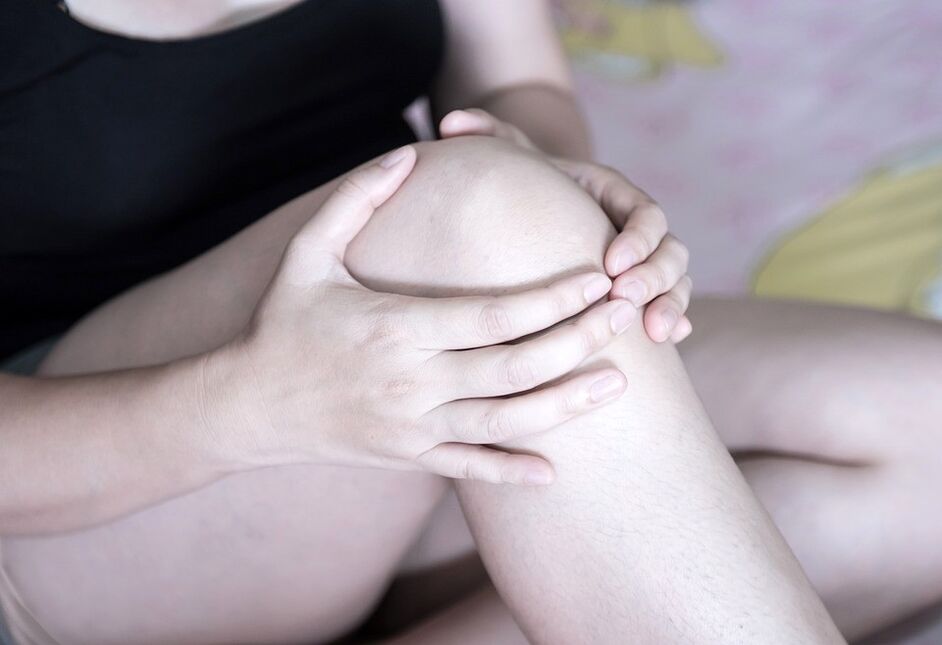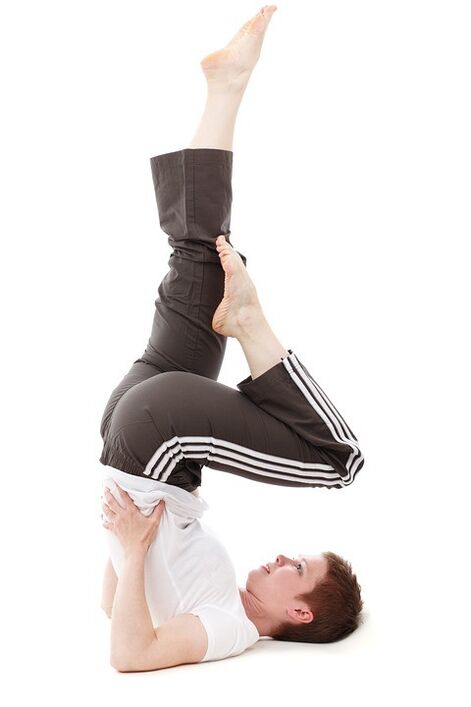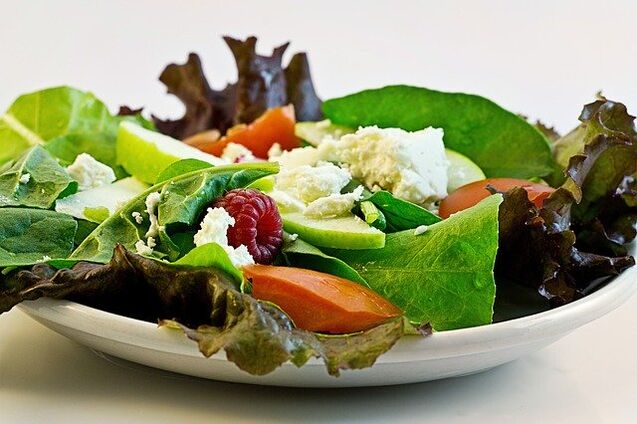Osteoarthritis is a group of diseases that occur for a variety of reasons, but are similar in clinical manifestations and natural. At the heart of all joints is the defeat of the joint components. Osteoarthritis is a progressive disease with reduced function of the affected joint. Knee joint arthropathy (gonarthrosis) is a disease in which the cartilage, the articular membrane, the ligaments, the periarticular muscles of the knee joint are damaged. Knee joint disease, the treatment of which requires a comprehensive approach, also requires your attention. And also at least a basic understanding of why and how the disease progresses.
Gonorrhea: causes
The causes of the knee joint can be:
- Joint Injuries: According to the scientific literature, about one third and probably half of all joint cases are preceded by an injury. A person may accidentally trip over the road or injure a joint while playing sports. First, there will be acute pain, which then dulls and becomes slightly painful, but does not cause much discomfort. Usually, in most cases, the joint will heal quickly and show no signs of injury. But in rare cases, this unfavorable coincidence of circumstances can cause the development of joints.
- Long-term joint overload: It is believed that people whose occupation is associated with prolonged excessive joint stress (professional athletes, postmen) may experience premature joint arthropathy.
- Inflammation of the joints (arthritis of the knee joint): with inflammation of the joint, biological and morphological changes occur, blood flow is disturbed, therefore, arthritis causes arthropathy of the knee joints (secondary arthropathy).

Additional risk factors
- Heredity. Usually, joint arthropathy is not directly inherited, but the "catalysts" in joint development may be the peculiarities of metabolism, the structure of cartilage tissue, which are only genetically transmitted. Also, the possibility of a joint can occur if a person has joint abnormalities or underdevelopment, trauma at birth.
- Overweight. Being overweight is an "aggravating" condition in the development of joints: that is, it is not directly related, but weight gain has a great burden. We must remember that in obese people, arthritis of the knee joints is more serious than in others.
- Chronic stress. It is a well-known fact that in case of excessive experience, the adrenal glands release "stress hormones", due to which there is a deterioration of the blood supply and a decrease in the production of hyaluronic acid, which is an important component for normal joint function. As a result of chronic stress and the above aggravating circumstances, arthropathy can occur.
The symptoms of knee pain
- Pain. One of the initial and main symptoms of knee joint disease is pain in the knee joint. It is worth noting that knee pain will only occur during exercise: when you walk, run, squat and lie down, this pain will disappear and after a while it will disappear completely (until the next load).
- Tingling in the joint. In contrast to the "contraction" of the joints of healthy people, the crisis of the joints affected by joints has a different tonality: it is rough and "dry".
- Stiffness in the joints. 1st degree knee joint disease is usually not as stiff as in later degrees. However, as the progression progresses, the range of motion in the affected joint decreases significantly.
- Deformity of the knee joint. As the knee progresses, abnormal formations develop in the bone joints. Because of these the appearance of the joint may be different from that of the healthy one. In addition, the appearance of the joint can be somewhat "bulky", this is due to excessive accumulation of intra-articular fluid (arthritis).

The course of the joint of the knee joint
Knee osteoarthritis affects women more often than men. This disease often develops after forty, but sometimes appears earlier, usually after injuries and in professional athletes. More complicated and more severe knee arthritis progresses, as we wrote earlier, in obese women, as well as in people with severe varicose veins.
The onset of the disease is characterized by the appearance of slight pain in the knee. Often, pain occurs when a person has to stand on their feet for a long time, when going down and up stairs. When a person lies down, the pain disappears, but when you have to get up, the first steps become very painful for him.
There are three degrees of articulation of the knee joint
Knee joint articulation 1 degree
Grade 1 knee joint disease is characterized by sometimes severe pain in the knee, but at the same time, the bones that form the knee joint remain insufficient, but due to arthritis, the knee may appear slightly swollen. If there is too much intra-articular fluid, it can spread to the popliteal fossa. This condition is called Baker cyst. If you have been diagnosed with such a diagnosis, you do not need to worry, this is not a cancerous tumor, it decreases under the influence of drugs prescribed by a doctor.
2nd degree knee joint joints
Grade 2 knee joint disease begins 2-3 months after the onset of the disease. During this period, knee pain is usually worse. This pain no longer occurs only during exercise, but accompanies a person with any movement. Usually at this time a separate knee crisis "joins" the joint pain. Grade 2 knee joints of the knee joint, in addition to severe pain and injury, are accompanied by a decrease in the ability of the foot to bend at the knee joint. The deformity of the joint manifests itself immediately: the bone structures change shape and when touched, the joint becomes hard and "rough".
Degree of knee joints 3
Grade 3 knee joint disease is characterized by constant severe pain, it is still difficult for a person to be in a prone position: he is forced to look for a place where he could rest. The knees become sensitive to the changes of the weather, the pains start at night. Grade 3 knee arthrosis of the knee joint is accompanied by a final reduction in mobility, it becomes impossible for a person to bend the leg at the knee joint more than 90 °. Sometimes, with a grade 3 knee joint, it is not possible to fully straighten the leg, a person has to walk on slightly bent legs. In some cases, the deformity of the legs develops in an O-shape or in an X-shape. In extreme cases, treatment of a high degree of arthropathy is necessary.
Knee joint: treatment. What is important to know when treating your knee with medication
Despite the abundance of advertising that promises a miraculous ointment for joint pain, you must understand that it is impossible to cure knee pain by any method, a comprehensive approach is required.
If you find the first signs of joint pain in yourself, you should see a doctor as soon as possible. This could be an article specialist, rheumatologist, orthopedist or, first, a general practitioner.
Knee Joints: NSAID Treatment
So how do you treat arthritis of the knee joint? Usually, these non-steroidal (non-hormonal) substances are used to treat the joints, which can relieve the inflammatory process in the joint. Knee arthritis is treated with medications that can have antipyretic, analgesic effects. Remember, drugs in this group should not be taken continuously. are able to mask the symptoms of the disease. Please note: do not self-medicate, act only under the guidance of a competent specialist who is able to prescribe treatment, based on the individual parameters of your body, taking into account the contraindications to the use of drugs.
In recent years, new generation drugs have been used in practice: they are selective agents that act in the same way as NSAIDs, but less often give unpleasant side effects and do not cause complications.
Knee joints: treatment with chondroprotectors
With knee arthropathy, you can get substances that nourish the cartilage tissue of the joint and restore its structure. These drugs are chondroprotective. Such drugs are more effective if you have 1st degree knee joint injuries, as with extreme knee joints there is almost nothing to repair: virtually all the cartilage is destroyed. To get the effect of chondroprotectors, it is necessary to use them for a long time: at least 2-3 cycles of treatment, which usually last one and a half years. Remember, although there are a few contraindications to this group of drugs, their use should be agreed with your doctor.
Knee joints: treatment with vasodilators
Vasodilators are a good combination therapy for treating arthritis. They help to restore the joint by improving blood flow and relieving spasms of small vessels. A pleasant benefit in the treatment of the knee joint, including vasodilators, may be the elimination of night pain in the damaged joint. If you want to achieve the maximum therapeutic effect, vasodilators are best used with chondroprotectants, so that the nutrients of chondroprotectors penetrate the joint in larger quantities and circulate more actively in it. Remember that the use of any medications should be coordinated with your doctor.
Knee joints: medicated ointments and creams
Therapeutic ointments for arthritis are often used as a trap by traders for desperate patients. Remember that treating a knee joint with extreme grade ointment will not work, but in the early stages, the cream and ointment can significantly alleviate the condition. Pain relieving ointments can be used to improve joint circulation. Such drugs help to eliminate painful spasm in the joint, increase blood circulation. You can also use ointments based on bee and snake venom. These ointments have an irritating effect that increases blood circulation to the damaged joint. Remember, many poison-based ointments can cause an allergic reaction, so only a specialist should be allowed to use them.
Therapeutic exercises for knee joint joints
Therapeutic physical culture for knee joint arthropathy is an effective method of treatment in combination with medication and physiotherapy.
You have to remember that therapeutic exercise for gonarthrosis is the main method of treatment, because we can not strengthen the muscles and blood vessels of the knee joint and activate the blood supply with any drug. In addition, therapeutic gymnastics is the most economical and effective treatment that does not require unnecessary material costs.

But it is necessary to deliberately perform exercise therapy complexes for arthritis: do not rush to do 200 squats a day or 100 kicks. Under no circumstances should you give a strong dynamic load and instead of active bending extension, do static exercises. Unfortunately, most patients do not want to do only static exercises because it is the most energetic and tiring, but if you can endure for 2-3 weeks, exercising regularly will not only improve the condition of the knee joint, but also findan increase in power and increase efficiency.
How to do it right
The exercises should be performed very smoothly and gently, stretching the ligaments and joints with light pressure. Do not leave severe pain during exercise. Aim for gradual and regularity, do not rush: the expected result will be achieved only with a steady moderate effort.
Remember that strength training should not be used for the first time after abdominal and chest surgeries, with fever, critical days in women. It is absolutely necessary to pay attention not only to the joints, but also to put pressure on the muscles of the abdominal press and back. This is required so that the main blood flow passes to the extremities through the muscles of the abdomen and back.
Exercise bands are freely available on the Internet, try to do a variety of exercises for 30-40 minutes a day, every day, following our instructions.
We wish you perseverance and desire to return to the previous ease of movement!
Physiotherapy for knee joints
If you ask if it is possible to apply physiotherapy for knee arthritis, we will answer - for sure!
Knee joints: treatment - laser treatment
Laser treatment is the use of a beam of light for therapeutic purposes, consisting of ultraviolet, infrared, red radiation spectra. The effect of the laser has anti-inflammatory, decongestant and analgesic effects. Usually, the course of laser treatment consists of 15 sessions. Laser treatment is a relatively safe method of treatment, but it is impossible to cure arthropathy with a single laser, this is an additional method of treatment.
Knee joints: treatment - cryotherapy
Cryotherapy is the result of local cooling in the joint. There are two methods of cryotherapy: the use of cryotherapy and the application of liquid nitrogen directly to the joint. The latter method is believed to be the most effective for knee joint joints. With the help of cryotherapy, it is possible to improve the blood supply to the joint, improve metabolic processes and relieve muscle spasms. The course of treatment is usually 10-12 daily sessions.
Knee joints: treatment - magnetotherapy
Magnetotherapy - exposure to a magnetic field. A fairly common method of physiotherapy for treatment in hospitals and clinics. Exposure to a magnetic field has anti-edema, stimulates non-contact electrical muscles and reduces joint inflammation. The course of treatment is prescribed by a doctor - physiotherapist.
Knee joints: treatment - ultrasound treatment
Ultrasound therapy - therapy with sound waves. Ultrasound for arthropathy helps improve blood supply, reduce muscle spasms and has an analgesic effect. To enhance the therapeutic effect of ultrasound, a drug is applied to the affected joint. With the help of ultrasound waves, the drug penetrates the tissues more easily.
Knee joints: heat treatment
Heat treatment for knee joint arthropathy is used in 1-2 stages of the disease. This method includes treatment with ozokerite, paraffin, mud. It is the last that deserves special attention: the treatment of the joint with mud can be done at home. It is necessary to dilute the therapeutic mud with water and heat it to a temperature of 60 °, then mix the resulting mass with unheated mud, cool to 38-42 ° and apply a layer 2-3 cm thick on the affected joint. Cover the mixture with olive oil and a warm blanket. Leave for 30 minutes. Perform the procedure every other day with a course of 10-12 procedures.
Diet and herbal remedies for knee joint arthritis
Arthritis diet is an important factor in successful treatment. But we must understand that the development of the joint is not related to any peculiarities of the diet, but it is the excess weight that contributes to the appearance of a joint of the lower extremities. However, you need to lose weight properly: under no circumstances should they starve or sit on strict diets, because, as you know, after leaving a strict diet, the weight increases again and, often, in even greater amounts.

We need to know that being overweight is also a disease, but it can and should be treated. With obesity, the regulation of the centers of appetite and satiety is disturbed, but it is possible to "guide on the right path".
First, you need to recognize that there is a problem that is often associated with poor eating habits. Second, you need to learn to set realistic goals for yourself. A weight reduction of 10-15% from the original price is an excellent result. Believe me, even if you lose weight even 5% of the original, you will feel immediate relief: there will be a reduction in blood pressure and the condition of the joints will improve.
Aim for weight loss
In any case, if you have set yourself the goal of losing weight, then you should reconsider your diet, composition and amount of food consumed. Cut down on pastries, baked goods and all kinds of "fast" carbs.
For beginners, we suggest you try a simple way of eating. Prepare your usual diet by placing the regular portion on a plate. Now, eat only half the food on your plate. You will soon notice that you are just eating the whole portion, although you need very little to satisfy your hunger. Even if you are hungry, slowly eat half of your portion and rest for 10 minutes. You will be surprised that after this time you just do not want to finish the rest: the hunger is gone and with this frantic desire to eat everything. After two months of such "subdivision" you will see a remarkable result. Try it!
Along with proper food intake, we must not forget a sufficient amount of fluids. Those who do not have serious cardiovascular and kidney diseases, as well as those who do not suffer from edema, can safely increase the amount of fluid they drink up to 2 liters per day.
Alternative treatment of knee joint arthropathy
Herbal remedies for arthritis. It is important to note that infusions and decoctions for arthritis help weaker than the above methods, but may be of relative benefit.

During the month, you can make one of the following injections:
Remember, you should only take each infusion or decoction separately and then replace it with another. Do not drink it all at once!
Birch decoction for arthritis
Birch decoction for arthritis: 1 tablespoon birch buds should be poured with a glass of boiling water, boil the mixture on low heat for 15 minutes and let it boil for 1 hour, covering the container warm. After an hour, drain and add the broth with boiling water to the original volume. Take a quarter (1/4) cup of infusion 4 times a day, one hour after meals for a month.
Linden infusion for arthritis
Linden infusion for arthritis: 3 tablespoons linden flowers should be poured into a glass of boiling water, boil on low heat for 15 minutes, then cooled and filtered. Take warm infusion of 1 glass 3 times daily after meals for 3 weeks.
Burdock decoction for arthritis
Burdock decoction for arthritis: 1 tablespoon of burdock roots should be poured with 1 cup boiling water, simmer for about 30 minutes, stirring frequently, after which the broth should be cooled to room temperature and filtered. Take the broth hot in half (1/2) cup 3 times daily before meals for a month.
Elderly infusion for arthritis
Arthritis stain infusion: 2 tablespoons of gray cone (Alnus incana) should be poured into 1 glass of boiling water, kept on low heat for 15 minutes, then cooled and filtered. Take a third (1/3) cup of cone twig infusion 3 times a day half an hour before meals for a month.
Collection of medicinal herbs for arthritis
Collection of medicinal herbs for arthritis: mix in equal parts willow bark, parsley roots, black bilberry flowers and nettle leaves, chop well. Pour 4 tablespoons of the mixture with 1 liter of boiling water and boil on low heat for 5-10 minutes and then leave for 2 hours and drain. Take this collection in half a glass 4 times a day for half an hour before eating. The course of treatment is 1 month.
conclusion
Although arthritis is a very unpleasant disease, when we deal with it, it is necessary to draw the right conclusions from the disease, to reduce negative emotions, to start fighting for your complete physical and mental health, following the recommendations thatwe have suggested. Then you will definitely beat the disease!






























